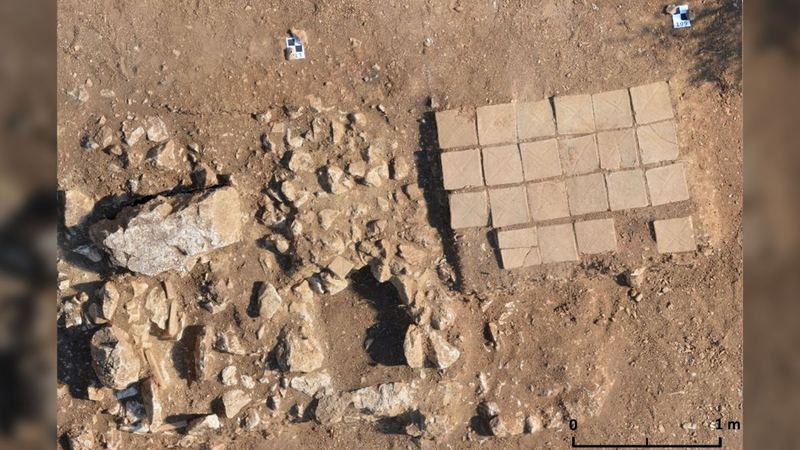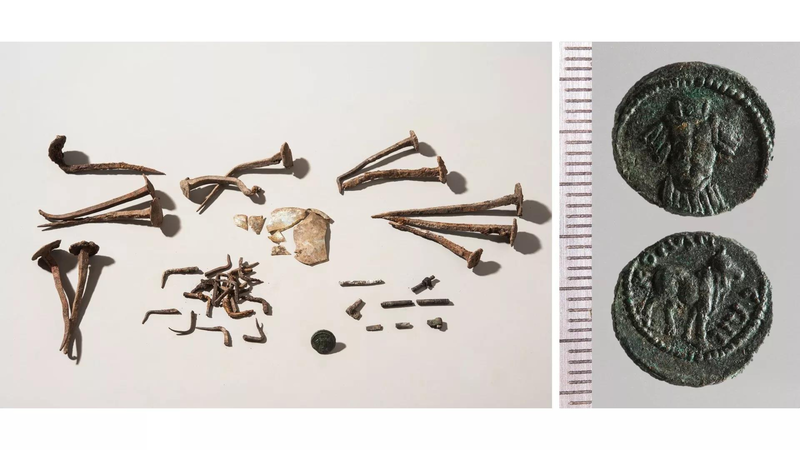According to Live Science, the tomb, dating from about 100-150 AD, is a cremation tomb built right on the pyre and has a very normal structure.
First, it consists of 24 meticulously placed bricks that research steps show were laid even when the pyre was still smoldering. An equally unusual plaster plaster was carefully plastered to enclose the ashes of the deceased.

The mysterious ancient tomb at the excavation site – Photo: KU Leuven
The strangest are the 41 curved and twisted nails that archaeologists call “death nails”, scattered along the sides of the pyre. According to research recently published in Antiquity, it is the grave of an adult male.
Researcher Johan Claeys from the Catholic University of Leuven (KU Leuven – Belgium) said: “The burial ends with not one or two but three different ways that can be interpreted as an attempt to shield the living from harm. dead person. Or vice versa”.
Although placed bricks or “encrusted” plaster have been found in a number of ancient Roman tombs, besides bending the nails of the dead, this is the first time that archaeologists have found a tomb that was carefully sealed with all three ancient “magic” things, representing the ancient fear of the “sleeping dead”.

Strange nails and coins unearthed from the grave – Photo: KU Leuven
Even so, the dead still seem to be sent off thoughtfully with many funeral items for daily life such as woven baskets, food, coins, ceramic vases, glass vases…
The Sagalassos archaeological site was inhabited from the 5th century BC to the 13th century AD and has many interesting examples of Roman architecture, including a theater and bath complex. The ruins have been covered with dense vegetation for centuries, keeping everything below well-preserved.
As part of the Sagalassos Archaeological Research Project, tombs on the outskirts of the old town were excavated, including learning about cases of “unconventional cremation”.